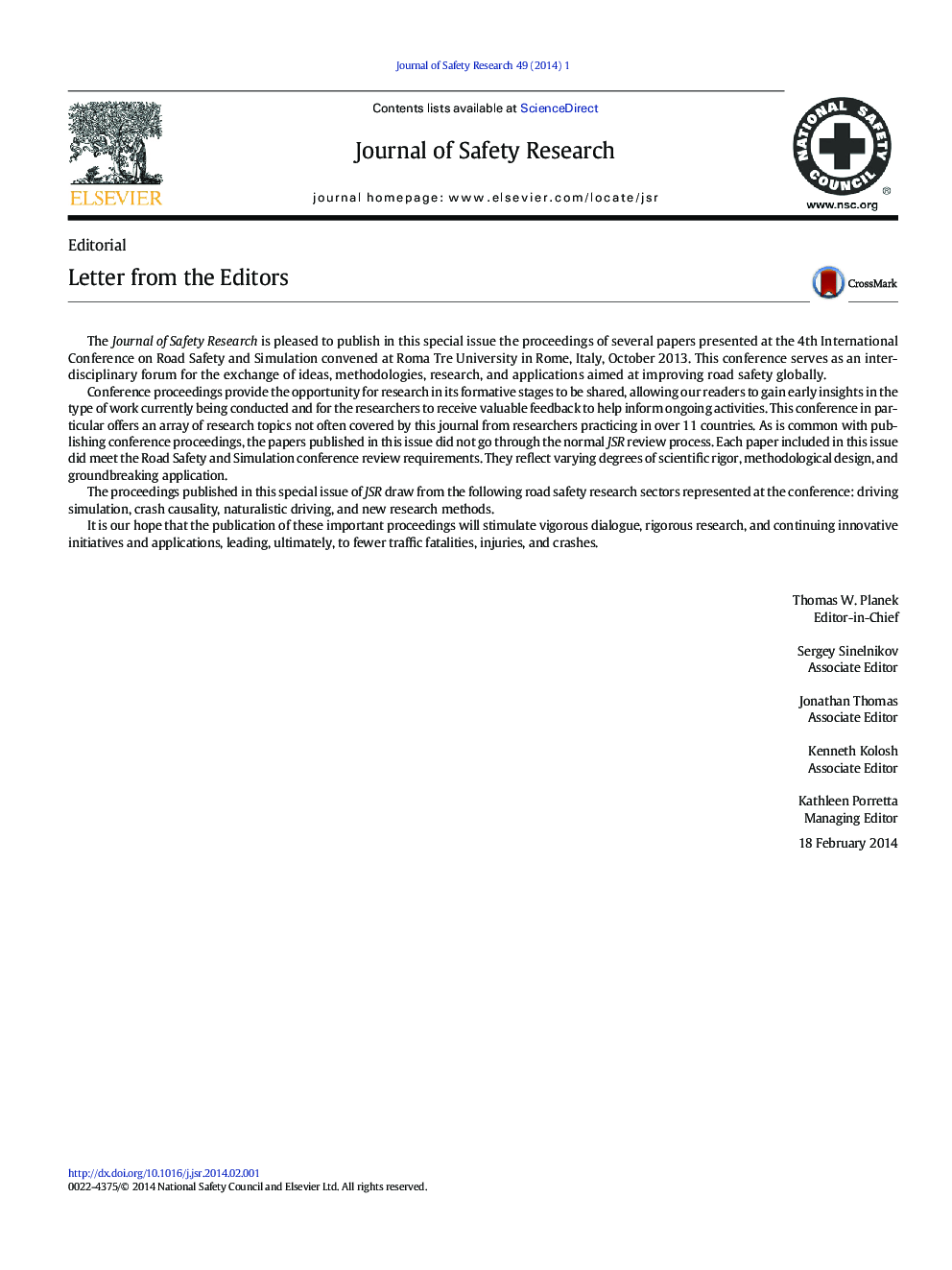| کد مقاله | کد نشریه | سال انتشار | مقاله انگلیسی | نسخه تمام متن |
|---|---|---|---|---|
| 587418 | 1453311 | 2014 | 52 صفحه PDF | دانلود رایگان |
• Several safety studies and accident database suggest that stronger consideration should be dedicated to night driving conditions.
• The prediction of operating speeds is strongly recommended to evaluate design consistency, highlighting abrupt changes in the roadway's features which can determine surprising events and lead to accident.
• Nowadays predictive models of operating speed and speed differentials are focused on daytime driving conditions, neglecting nighttime driving conditionings.
• In this study we compare and model driver operating speeds and speed differentials in simulated day and night driving, identifying the significant factors that influence speed behavior under different lighting conditions of the road environment.
• We propose new predictive speed models for tangent and curve as well as speed differential models, differentiated for daytime and nighttime driving, highlighting the effects of different geometric predictors under different visibility conditions.
ProblemAccident statistics demonstrate that there should be a greater focus on nighttime driving to improve our knowledge of driver behavior under poor lighting conditions. However, the current geometric design criteria do not take into account driving at night. Moreover, studies that propose predictive models of operating speed only consider daytime driving conditions.MethodThis study compares driver speed behavior during daytime and nighttime driving and models operating speeds and speed differentials, identifying significant factors that influence speed behavior under different lighting conditions. The research was carried out using a driving simulator for a section of an existing two-lane rural road composed of 39 tangent–curve configurations. Speed profiles were recorded for 40 drivers under simulated daytime and nighttime driving conditions.ResultsNew predictive speed models, differentiated for daytime and nighttime driving, are proposed that highlight the effects of different geometric predictors under different visibility conditions. Specifically, predictive models for operating speed on curves identified the inverse of the radius and the deflection angle of the curve as predictors under both driving conditions. For speed differentials based on the 85th percentile for maximum speed reduction (85MSR), we found that the inverse of the approaching tangent length and of the curve radius significantly explained the dependent variable in both cases, with a higher dependence of nighttime 85MSR on the curve geometry than on the tangent length. Tangent length had a significant effect on operating speed for independent tangents only for the daytime model, whereas the inverse of the previous radius was confirmed as a predictor for both visibility conditions.Practical applicationsThis research may influence design considerations for nighttime driving by providing evidence of the effects of nighttime conditions on driver speed choices and road safety.
Journal: Journal of Safety Research - Volume 49, June 2014, Pages 45.e1–52
